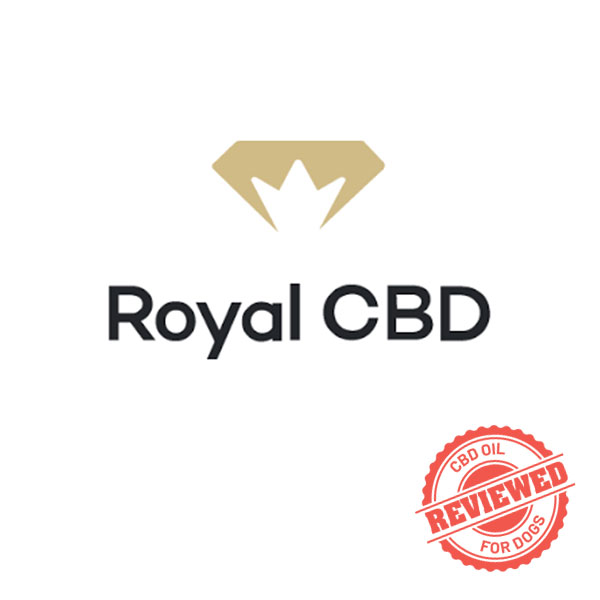Nobody likes seeing their four-legged friend feeling down, and while some dogs are naturally cautious or shy, an acute anxiety condition can limit your pet’s enjoyment of daily life. Luckily, there are lots of steps owners can take to help.
Here’s a rundown on canine anxiety, plus ten suggestions for owners on how to help their dog manage and improve their anxiety condition.
A dog with anxiety vs a nervous dog
Dogs are good at letting us know when they’re feeling nervous, and most people are generally good at reading dog behaviors that signal fear or uncertainty. A tucked tail, flattened ears, lowered head, and wide – searching eyes are all clear signs that a dog is uncomfortable.
There’s nothing inherently wrong with a dog that is highly strung or prone to over-caution. However, there are a number of ways in which general nervousness can begin to turn into a more serious anxiety condition. For example, if your dog is showing signs of nervousness more frequently, or without an identifiable reason, this may be something to watch. Likewise, if your pup is having extreme reactions to a particular trigger, they may have, or be developing a phobia.
Symptoms of a dog with anxiety
Owners are best placed to notice when nervousness is their pets might be turning into anxiety. Spending every day with your dog means you’ll likely be the first to notice when any of the symptoms below begin to occur, or when they substantially increase.
Note: no one of these behaviors means your dog is suffering from anxiety. In addition, most anxiety symptoms are a matter of scale—for example, perhaps your dog has an accident indoors once in a while. But is this behavior increasing? And can it be linked to a cause or reason?
The more of these behaviors you observe, the more likely that your dog is anxious:
The exact way that your dog manifests their anxiety can depend on the cause of their discomfort. The next section outlines some of the most common underlying causes of anxiety.
The main causes of canine anxiety
Rates of anxiety in dogs
As dogs live longer and happier lives, the rates of sorts of canine conditions, from cancer to arthritis, are rising. The same is true for anxiety, with the onset of anxiousness often occurring in old age.
Studies like this one from the Journal of Veterinary Behavior have shown that rates of anxiety in dogs have comorbidities. In other words, a dog who’s fearful of strangers is more likely to develop anxiety, and even more likely if they’re also fearful of loud noises.
What can owners give their dogs for anxiety?
Here’s a list of the ten major and most common ways for owners to manage their dogs and anxiety. The truth is, the best management approaches combine more than one strategy, so aim to mix up supplements with exercise and routine changes, and always keep a close eye on what seems to work best for your pup!
1. CBD oil
Cannabidiol (CBD) is a derivative of the cannabis plant with an active—but non-psychoactive—ingredient. Many studies have shown that CBD oil for dogs with anxiety can help calm them down. Both humans and dogs alike can use CBD to benefit from cannabis’s anti-anxiety & anti-inflammatory and calming properties to aid in anxiety, without getting high, which would no doubt be an alarming, and possibly detrimental, experience for your pup.
2. A stricter exercise routine
An often ignored component of anxiety in both humans and animals is excess physical energy. When dogs don’t have the chance to work off all of their energy in a day, some may exhibit signs of restlessness, boredom, and general nervousness.
As a result—and especially if you’re planning to leave your dog indoors for a prolonged period—it’s important to devise a walking and exercise routine that meets your dog’s needs. While that may not mean that your dog collapses in exhaustion after every walk, they should be exercising enough to need a nap or rest time during the day.
3. Lavender oil (essential oils)
Like us (and perhaps even more so) dogs can pick up on the ambiance of a room, and may feel calmer and safer in environments where care has been taken to create a positive atmosphere. There are several ways to introduce a greater sense of calm into an environment, from regulating noise volume to introducing consistent routines (see tip 5).
Alternatively, lavender oil—whether rubbed on owners’ hands or vapourised in the air—can have a great calming effect on dogs. There’s plenty of anecdotal evidence in favor of lavender oil, including the fact that many dog groomers will use it to reassure dogs as they’re being handled. What’s more, a study that applied lavender oil to dogs’ ears found a significant reduction in anxiety-related symptoms such as increased heart rate.
4. A better diet
The relationship between canine anxiety and diet is well established—at least among owners. A quick Google search will tell you that, while food changes alone rarely cure anxiety, dogs who switch up their diet to include more sources of tryptophan often appear calmer and more relaxed.
Tryptophan is only usually talked about around Thanksgiving, due to the commonly reported sedative effect of eating lots of turkey meat. But the ingredient is no more potent in turkey than other kinds of meat, so it seems the key is the quality, rather than the type of meat in your dog’s diet.
5. A more regular home environment
Rethinking the length or frequency of time spent apart from your dog is an obvious way to help manage separation anxiety. But if that’s not possible, there are plenty of other things you can do to help make your dog feel safe and sound at home.
Much of this consists in creating a space where your dog can know what to expect. So, clear boundaries, regular routines, and a good balance of stimulation with time to relax. For example, if your dog shares their home with other feline or four-pawed buddies, perhaps there’s a link between pet interactions and levels of anxiety. Would they benefit from scheduled playtimes, or more daily time spent alone?
Another common anxiety-trigger feature of home life for dogs is sudden noises. Does your dog jump up every time the squeaky front gate opens? If so, maybe the gate could be oiled to make visitors less intrusive for your pet.
6. A counseling session
(+ observation of triggers and phobias)
Dog therapy is a real and beneficial treatment for many dogs who just can’t seem to shake certain anxieties or phobias. Dog behaviorists are trained professionals who have experience in guiding your pet through training routines to alleviate their stress, as well as advising owners on why their pets are acting as they do.
If you don’t feel that your dog requires the expertise of a behaviorist, but still have concerns about their mental health, you can also perform the role of observer yourself. Look out for red-flag behaviors, such as those described above, and this list of Signs Your Dog is Stressed by VCA hospitals. Taking time to consciously notice how your dog is acting makes it easier to see patterns in, and causes of, their behavior.
7. Professional training classes
A more common form of professional help sought out by owners of nervous dogs is training classes, which can be especially helpful to anxious puppies. Introducing young dogs to a highly social environment—full of friends to play with—is an easy way to begin to teach them how to restrain themselves around others. Add to that the expertise of a professional trainer, and you have a recipe for one calm and capable pup!
8. A clear task to focus on
One of the reasons that many dogs respond so well to training classes is that the class environment is full of clear instructions and well-thought-out tasks. Professional trainers know how to focus your dog’s mind and get them zoned in on the right behaviors at the right times.
Having an absorbing task to focus on has been shown to reduce anxiety in both humans and dogs. For example, a study on mindfulness and attention techniques showed increases in anxiety when participants focused attention on themselves rather than on the task at hand. While owners will relate to the way a dog can suddenly become the ideal pet if there’s a treat to be had or a stick to be thrown. Use these sorts of incentivized tasks as a way to distract your pup in moments where they’re likely to become scared or anxious.
9. Benadryl and antihistamines
If you believe that your dog would benefit from anti-anxiety medication, it’s always critical to go to a veterinarian for advice, rather than self-prescribing for your pet. This is especially true if considering giving your dog medication design for humans, as many human-grade drugs react differently (and harmfully) when given to dogs.
An exception to this rule are antihistamines, which—though—not FDA approved, have long been recommended by vets and professionals as a treatment for a variety of inflammation-related canine issues.
While not anti-anxiety medication, antihistamines such as Benadryl do produce a mild sedative effect which is likely to benefit a nervous dog. Of course, it’s still recommended to talk to your vet about usage and dosage before you give your dog any kind of pill.
10. A crate
Finally, one of the most effective things an owner can do to help their dog’s anxiety is to establish a space for them that’s confined, quiet, reliable, safe, and only theirs. Enter: the crate. While some owners have mixed experiences with training their dogs to use a crate at night or when they leave the house, the wider benefits of crate training mean it’s (usually) worth pushing through.
For nervous pups, having a crate means they know there’s at least one place in the house that’s 100 percent safe and unchanging. For owners, having a crate gives a reliable option to turn to when you know a possible anxiety-producing event is upcoming. For example, if your dog is scared of children, and you know that children are coming over, a crate-trained dog can happily spend some quiet time away from the action!



